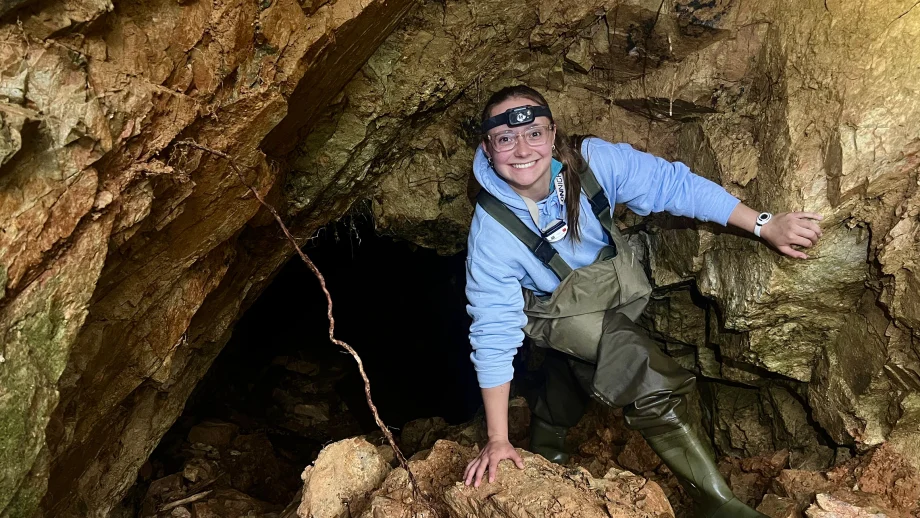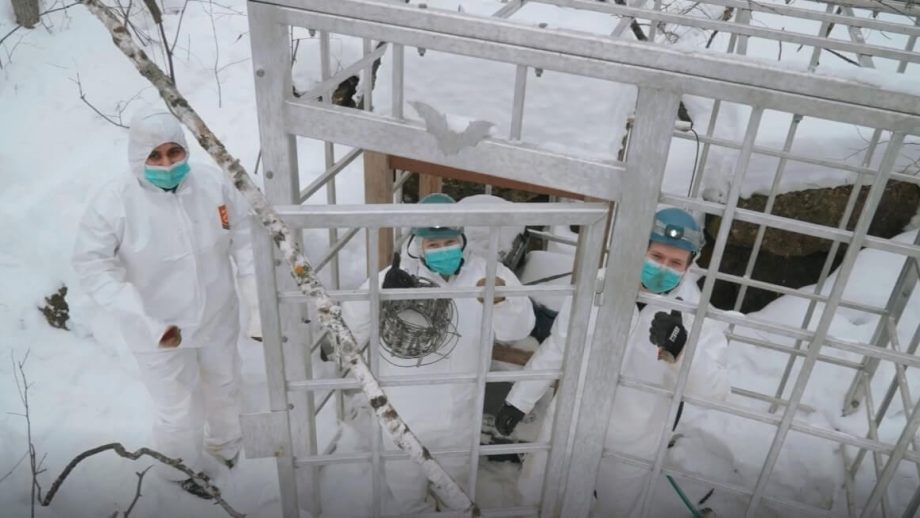The very best undergraduate student research in medical physics was on display Tuesday, August 11, during the Medical Physics Summer Student Symposium.
Emma is an extremely dedicated, talented, and busy student who always seems to find the time to get everything done perfectly, and she gave a very professional presentation.
Dr. Melanie Martin
This annual event, which is hosted by UWinnipeg, the University of Manitoba, and CancerCare Manitoba, showcases research by students from across Winnipeg and gives them, along with faculty members, the chance to learn about the research their colleagues are conducting.
UWinnipeg was represented by:
- Madison Chisholm, who presented Inferring Axon Diameter Measurements in White Matter Tracts of the Mouse Brain Using Diffusion Magnetic Resonance Imaging;
- Jessica de Kort, who presented Localizing Catheter Tips in Prostate Brachytherapy Through a Deep Learning and Feature Extraction Pipeline; and
- Emma Friesen, who presented Voxel-Based Analysis of the Mouse Corpus Callosum Using Oscillating Gradient Spin Echo MRI Pulse Sequences.
“Madison, Jessica, and Emma’s summer research advanced the field of medical physics and helped pique their interest in the field,” said Dr. Melanie Martin, Professor in the Department of Physics. “In the fall, Jessica is continuing toward her Bachelor of Science in Physics, Madison is starting the Master of Science in Bioscience, Technology, and Public Policy, and Emma is completing her final year of a Bachelor of Science (Hons) in Biochemistry.”
UWinnipeg student-athlete finishes first
Friesen, who is also a member of the Wesmen Athletics’ women’s soccer team, took home first-place honours at the symposium for presenting her undergraduate thesis.
“It was shocking,” she said before laughing. “I’m not a physics student and it’s a physics conference.”
As part of the ongoing research, Friesen and Dr. Martin have been using magnetic resonance imaging to non-invasively measure axon diameters, which are the cells in the brain and nervous system that conduct electrical impulses.
“Axon diameters have been previously shown to shrink or change in a range of neurodegenerative disorders, including Alzheimer’s, schizophrenia, and autism,” Friesen explained. “My thesis is comparing two different methods of analysis: voxel based and region of interest based.”
She added they’re analyzing the corpus callosum in the brain of a mouse.
“Emma is an extremely dedicated, talented, and busy student who always seems to find the time to get everything done perfectly, and she gave a very professional presentation,” said Dr. Martin. “This summer’s work has led to two submitted peer-reviewed articles, and this has formed the basis of the work she will be doing this academic year for her thesis.”
Friesen says the mentorship she’s received from Dr. Martin has completely changed her undergraduate experience.
When she first started her studies at UWinnipeg, Friesen didn’t know there would be so many research opportunities available for undergraduate students.
“After I took Dr. Martin’s first physics course during my second year, I saw that her research with MRI and brain imaging was really, really cool,” she recalled. “I reached out to her and she had all these great opportunities for me. I didn’t know that you could do any research until you got up to higher levels, so it’s been really cool and interesting to be a part of.”
You can see Friesen, Chisholm, and de Kort’s research, as well as the research of other undergraduate students, on display at the Randy Kobes Poster Symposium on Wednesday, September 20.





